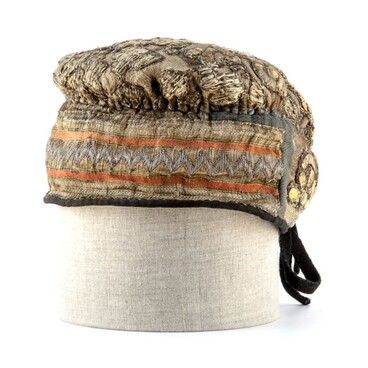Sunduk with a hasp lock
Sunduk is the most distinctive and traditional artifact of Russian household culture. A long time ago V. I. Dal’ wrote in his “Definition Dictionary of Modern Great Russian language” that “sunduki and korob’i are indigenous Russian utensils”.
Kublo is an ancestor of the sunduk. The translation of the word kublo is a habitation, a house, rooms. Sunduki were made by coopers. Sunduk was closed with a lock which was located under the cover of the sunduk. Sunduki were intended to keep dowry. Teremok (attic story) was a variant of a sunduk too. It looked like a superstructure for valuables.
All the family events were depicted on the cover of the sunduk. It was possible to read the family members’ dates of birth and death almost till the family great-great-grandmothers and great-great-grandfathers’ dates. Due to the records on the cover of the sunduk it was possible to learn the dates of christening, marriage, funeral service; church dates and feasts.
The sides and the cover of sunduki were decorated with tea wrappers, overseas treat wrappers, beautiful postcards.
Since the XIth century sunduki were among the main elements of traditional Russian house interior and kept fulfilling their functions till the first half of the XXth century. Sunduki played a special role in the domestic history because they were among the most ancient interior items which were used by all the social classes of the society: from the Tsar’s family to the peasants’ families at all times.
Sunduki were decorated outside with various panels, forged patterns, fanciful carving; they were covered with leather and fabric. Sunduki were locked with a bar or with a padlock or a dead lock. Sunduki were intended to keep and to transport household goods, clothes, tools, steel (sword, small sword, dagger, etc.) and money. There were sunduki — safes, sunduki –sarcophagi, sunduki — thrones.
Sunduk could play a part of a bed, a table, a bench, a chair. If it was put to the side it became a wardrobe, a chest of drawers. Sizes of sunduki ranged from tiny boxes to gigantic ones. The gigantic boxes were big enough not only to keep things but even to sleep!

